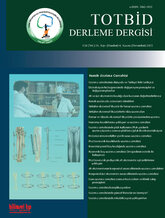
The historical development of distraction histiogenesis is one of the most striking examples demonstrating the permanence of biological principles despite technological change. The tension-stress effect defined by Ilizarov remains the fundamental mechanism of new bone formation. Over time, limb lengthening has evolved from circular and monolateral fixators to computer-assisted spatial systems and motorized intramedullary nails, enhancing both patient comfort and surgical precision. However, the histological and biomechanical principles governing regenerate formation have remained unchanged. Under optimal stability and distraction conditions, the regenerate formed within the distraction gap matures through intramembranous ossification. Slow distraction rates promote organized trabecular structures, whereas excessive rates result in fibrous tissue and cystic voids. Preservation of the periosteum plays a critical role in osteogenesis, as it serves as an active biological source rich in osteogenic cells and vascular structures. Regenerate quality is directly related to distraction rate, stability, osteotomy technique, and the integrity of surrounding tissues. Modern implants represent contemporary applications of the biological laws established in the past. Although technological advances have refined surgical methods, the essence of distraction osteogenesis remains constant: controlled mechanical tension directs tissue regeneration. Thus, limb lengthening surgery is not merely a technical procedure but a surgical philosophy that embodies the continuity of science and biomechanics.